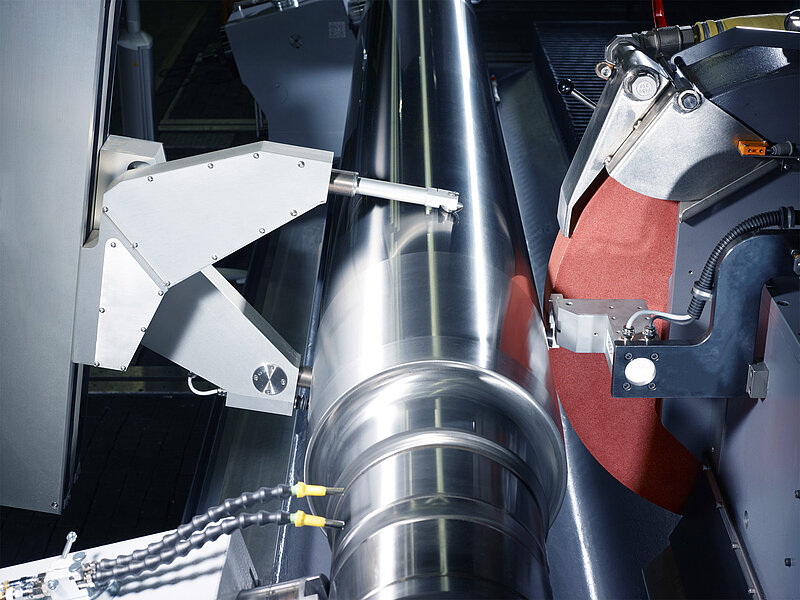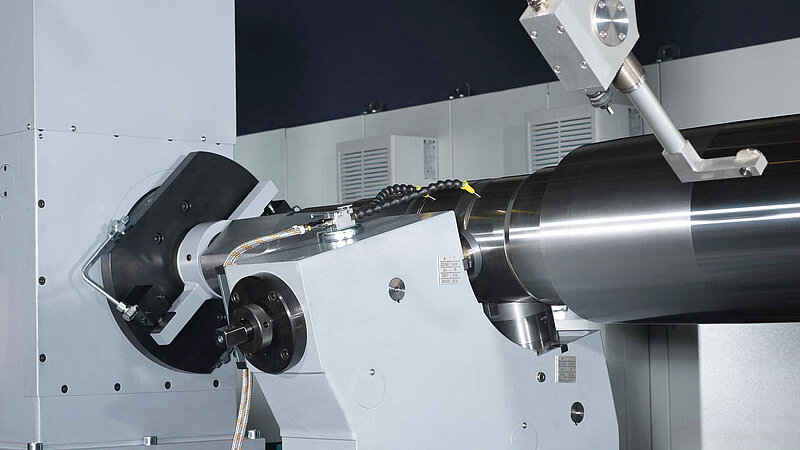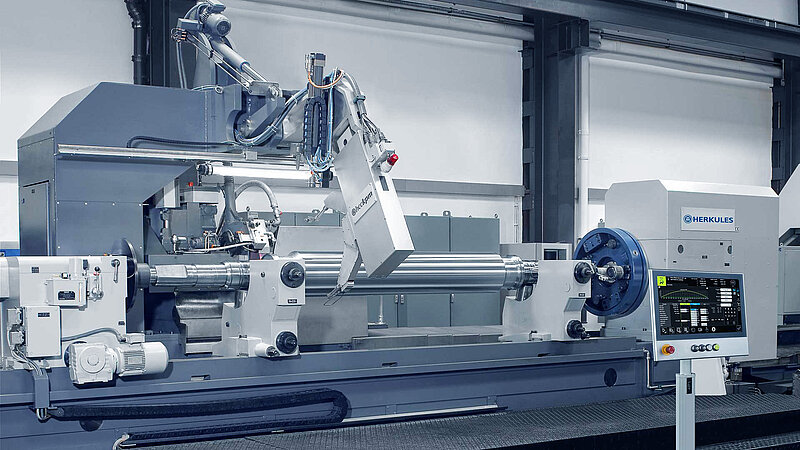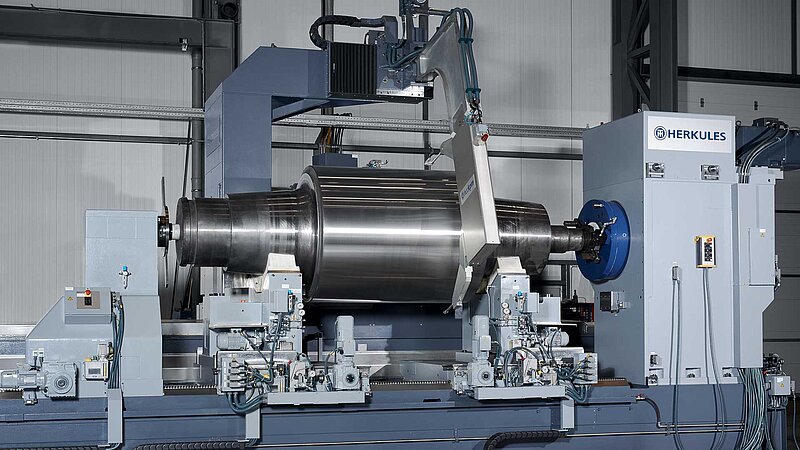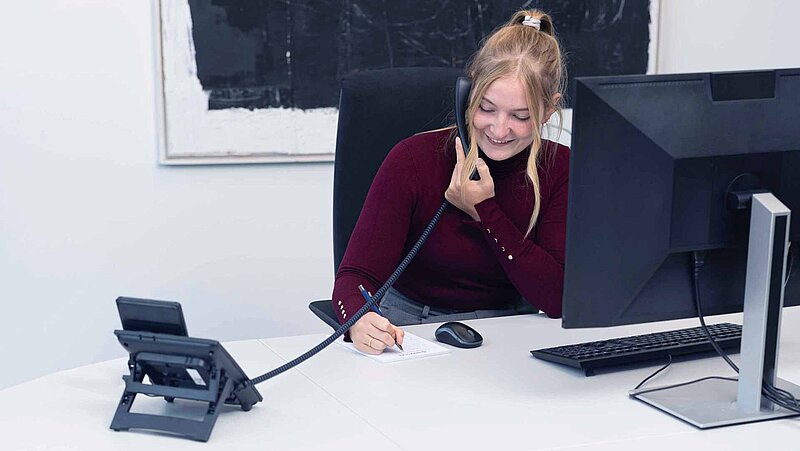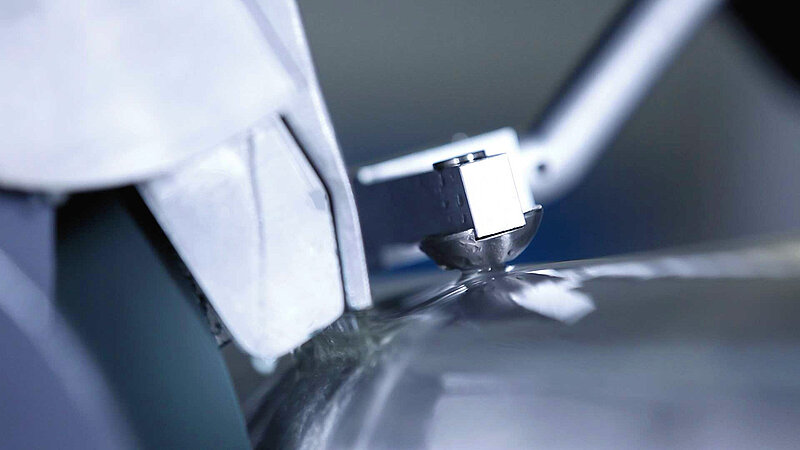Roll Grinders
Traversing Grinding Saddle
Herkules drum grinding machines stand for top performance in terms of precision, speed and efficiency worldwide. Thanks to the intuitive control system, which was specially developed within the HerkulesGroup for roll grinding machines, very precise processing results are achieved. The combination of ultra-fast control and measuring systems allows “correction grinding on the fly”: corrections are made during the work process and additional processing steps are no longer necessary.
All core components of the machines are manufactured to high standards within the Group. This guarantees the highest quality, flexibility and a long service life. Decades of experience in the construction of roll grinding machines and the modular design of the machines allow Herkules to build machines that are perfectly adapted to your application.
All grinding machines are optionally available with a Monolith™ bed in a patented composite design. The advantages: the best damping properties, thermal stability and the avoidance of expensive foundation costs.
Technical Data
Highest Performance and Maximum Flexibility
Grinding wheel driving power
from 10 to 300 kW
Weight of workpiece a few kg up to 300 t
Workpiece lengths
of up to 18,000 mm
Workpiece diameters
up to 3,000 mm
Industries
For Complex and Individual Demands
Herkules has been an established partner to a wide range of industries for many decades. Based on this extensive know-how, Herkules has developed individual solutions for every branch of industry. With a Herkules machine, every industry lays the foundation for a high-quality end product.
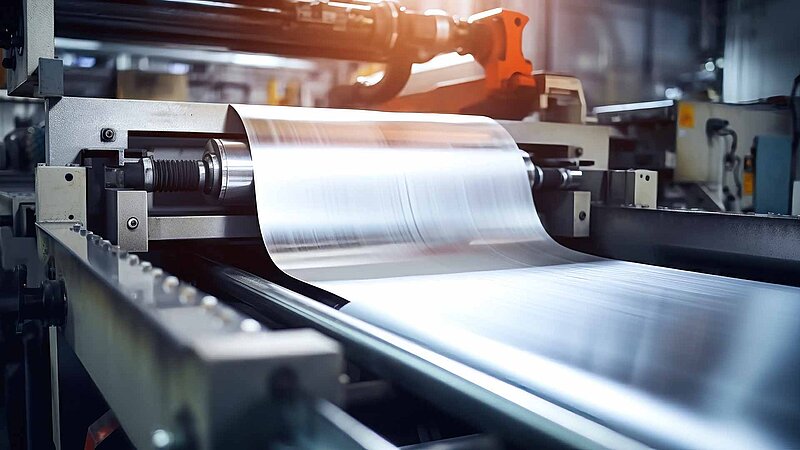
Technology
Sturdy Technology for Absolute Precision
Herkules offers a series of grinders with travelling tables that unite a number of technological benefits, such as the possibility to control the grinding process on the fly.
The strong ribbing guarantees the rigidity of the machines. The combination of hydrostatic and hydrodynamic guideways ensures highest precision and a long service life. Symmetrical load sharing results in absolute thermostability.
